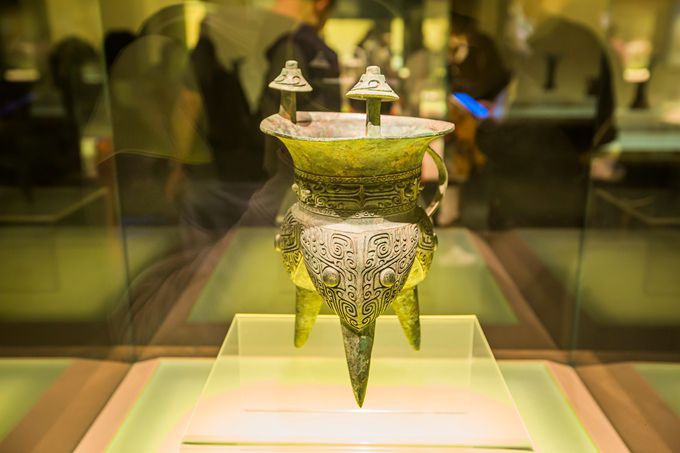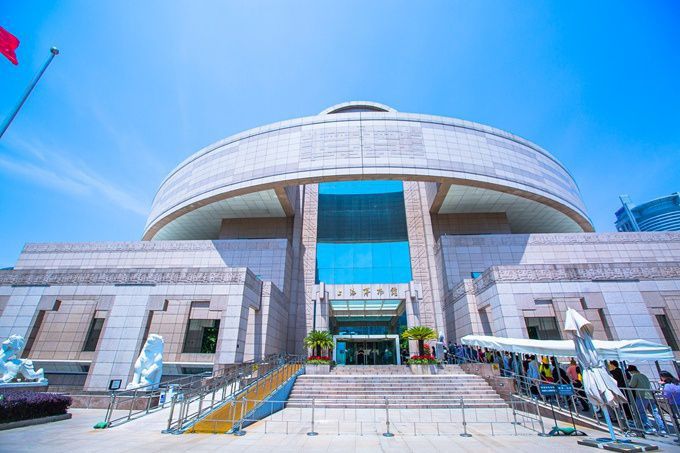Everyone has a fixed travel habit, some people arrive in a city, the museum is a place where they must go. Walking in the city, what people see is all about the present. Only walking into a museum is the best traceback of a city. When you come to Shanghai, Shanghai Museum has been hailed as half of all Chinese cultural relics, you can’t miss Shanghai Museum.
Shanghai Museum is located at No. 201 Renmin Avenue, the scale of the exhibition hall can be seen from the building, there are eleven special halls, three exhibition halls, and nearly one million cultural relics, including 120,000 precious cultural relics, bronze ware, chinaware, calligraphy and painting is the best part of the museum.
The exhibition is organized chronologically. The audiences walk into contemporary era step by step in time sequence and gain a deeper understanding of the city and historical development, the original chaotic impression becomes vivid, stereoscopic and clear.
The unswerving pursuit of beauty is the inherent nature of mankind from the date of birth. Looking at these artifacts from the Bronze Age, people always wonder and always want to know how to make ancient Chinese people perform such exquisite carvings when the tools were so backward.
More and more people like to visit urban cultural places such as museums and art galleries, although there is no lack of the cursory visitor, but more people look at these cultural relics carefully and experience a period of history with their heart. From making a sightseeing tour to savoring the history of the city, it’s a pleasure to see such changes.
Big Grams Tripod in the bronze exhibition hall is quite famous in China and is one of the three treasures in Shanghai. After apperciating precious cultural relics one by one, I find that various artifacts have become more and more exquisite with the development of the times. Beautiful shapes, exquisite grooves, fastidious craft…… all show the affluence and abundance of dynasties and regions.
Zizhong ginger plate in the Spring and Autumn Period is among the ten greatest treasures in Shanghai Museum. This is a bronze ware for washing hands and face in the early Spring and Autumn period, the whole bronze ware is simple but steady, a male bird with a crown is centered over the plate, on the sides are four fish, the outer ring of plate are four female birds, the female birds form are lively and vivid. But more amazingly, all the animals here can rotate up to 360 degrees in situ, this is special case in Shang Dynasty bronze vessels and Zhou Dynasty bronze vessels.
The unearthed chimes in the late Spring and Autumn Period. There is a real chime before our eyes, the chimes music spreading to our ears can make us immerse.
Many parents take their children to visit the museum. For children, in this colorful world, suddenly discovering so many unknown worlds should be a wonderful experience in childhood.
It is also the greatest treasures of the museum —— antique China Yongzheng Sign Pastel Eight peaches Olive bottle. The whole body is decorated with pastels. The fairy peaches are full, rich in color, peach branches are vigorous and powerful, decorated with five bats, five bats” homonym five blessings. Peach is a symbol of longevity. Drawing five bats centripetally around the peach, meaning “five blessings holding longevity”. The brightly-colored bottle is noble and generous, with natural and smooth lines, minimalistic but not simple.
I have seen many pottery figurines, most of them have a glazed expressions, the pottery figurines that have elegant facial temperament are a minority. Shanghai Museum seems to have many such cultural relics in glass showcases, it is a place fascinated by people.
The sycee is a cultural relic in Southern Song Dynasty.
There are many ways to take in sounds of the city, visiting a museum is most likely to touch the spiritual core. The modern Shanghai is certainly eye-catching, Shanghai’s long-gone history is equally wonderful. If you want to know the other side of the city, you might as well come to the Shanghai Museum to listen to the stories told by cultural relics.

